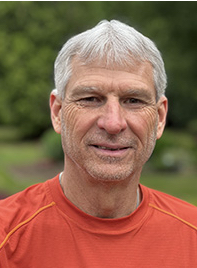Chapter 6 Oil & Dead Birds on the Coast
Part 2 of 2
By Ron Holcomb
Editor’s Note: Author Ron Holcomb is sharing a chapter from his recently released book Constant Chaos. You can also read previously published chapters here. We’ll feature other chapters in the coming months. Click here for more information on how to get his book.
The oil moved north on the winter nearshore currents and onto south-facing remote and rocky beaches. This severely hampered cleanup efforts as these areas were accessible only by helicopter. Cleanup workers were airlifted in during low tides and needed to be off the beach before they were trapped by the incoming tide. Access to the 24 miles of beaches on the Quinault Indian Reservation from Moclips to the Queets River required the tribe’s permission. Tribal members were trained and placed on cleanup crews. Tribal cleanup crewmembers were good workers, but the women were exceptionally meticulous and singled out for praise from Ecology and experienced cleanup supervisors.
Television news cameras and newspaper photographers documented wildlife professionals and trained volunteers capturing oiled birds. The dramatic pictures of helpless birds on the verge of death helped mobilize a massive citizen volunteer response that was needed at the bird center. Briefings and tours were also held for the governor and federal, state and local elected officials. After touring the command post and bird rehabilitation facility, Gov. Booth Gardner told reporters, “I’ve seen disasters in my tenure, but this is the best coordinated and best handled one I’ve seen.”
The Birds Won’t Float
A big problem surfaced, however, after the oiled birds were washed and appeared rehabilitated. Many sank in the float test tank. It turned out the Ocean Shores water was “hard” and left microscopic grains of minerals that broke the watertight integrity of the birds’ outer feathers. Water softeners were installed for the bird washing, which solved the problem. “That was the biggest thing we learned from the spill,” Berkner said. “We had run into this problem before, but we had no idea it was caused by hard water.”
Some good news came when daily surveillance flights showed the offshore oil dissipating as it moved north. Computer trajectories showed the oil presented less and less of a threat to the northern beaches. Everyone was caught by surprise, however, when a storm on New Year’s Eve slammed oil onto Olympic National Park’s wilderness beaches along the north coast. The heavy oil had been floating just below the surface. Oil was also found on the west coast of Canada’s Vancouver Island.
Also Read: Researchers Testing Better Way to Remove Oil From Seawater
The unexpected oiling of Canadian beaches caused outrage among Canadian residents and government officials. The concerns prompted Gov. Gardner and British Columbia Premier William Vander Zalm to create the Washington/British Columbia Oil Spill Task Force. The task force expanded in following years to include Alaska, Oregon, California and Hawaii and still is actively advocating for better oil spill prevention, preparedness and response along the West Coast.
The Response Moves North
A new command post was set up at the Coast Guard station on the Quileute Indian Reservation in La Push to manage the challenging cleanup underway on the remote wilderness beaches. And it was on those beaches that Thom Davis, Global co-founder and veteran oil spill cleanup supervisor, pioneered and perfected a new cleanup technique. “Oil snares,” which resembled cheerleader pom poms, were made from recycled plastic telephone wire wrapping and were effective in collecting heavy oil. But they were difficult to manage in the less-than-ideal conditions the cleanup workers faced. Davis came up with the idea to attach multiple snares on strands of rope and stake them at low tide on gravel and cobble beaches parallel to the water. After a tidal cycle, Global workers retrieved the oil-laden snares that could each collect up to 1.5 gallons of oil, about 15 pounds. Oil snares, made of flat, thin strands of polypropylene and preattached to ropes, are now used worldwide on heavy oil spills.
Oil on fully exposed rocky areas had to be left to natural cleaning by the pounding waves. Oiled logs were cut up and airlifted inland and burned in piles after an air quality variance was obtained. More than 560 tons of oiled debris, including a large amount of oiled plastic, was collected and disposed of. Ninety cubic yards of oil snares were burned with wood waste at a Port Angeles pulp mill.
More than 3,000 live oil-coated birds were treated and approximately 1,000 survived and were released by the time the bird center closed at the end of January. More than 2,500 volunteers from all walks of life aided the effort to care for, feed and clean the birds. In all, 10,300 live and dead birds from 40 different species were collected by search and rescue teams. The actual number of birds killed by the spill was estimated to be as high as 55,000. Common Murres were the most vulnerable and hardest hit species. Berkner traveled to Alaska in March 1989 to run the bird rehabilitation effort following the 11-million-gallon Exxon Valdez Oil Spill.
Four months after the spill began, nearly all the oiled shorelines were declared cleaned. Cleanup on a few remote beaches using oil snares continued until June 22 exactly six months after the spill occurred.
Investigation and Consequences
An exhaustive investigation of the incident found several problems. One of the main findings was that the snapped tow line was not properly maintained and was corroded.
Sause Brothers paid for the entire cleanup and bird rehabilitation effort. In December 1990, the federal government and the state of Washington announced a $3.35 million settlement with the company for fines, natural resource damages and agency costs. The company was found liable for Canadian damages in a January 1991 ruling by the U.S. District Court in Portland, Oregon. That ruling resulted in payments of more than $10 million as Sause Brothers settled cleanup and damage claims in Canada.
The fallout from the spill, coupled with the Exxon Valdez Oil Spill, prompted new state and federal oil spill legislation. But the Nestucca Oil Spill was a vivid reminder that the Washington coast is vulnerable to accidents involving the marine transportation of petroleum products. Unfortunately, it wouldn’t be the last major oil spill to hit the outer coast.
About the Author

Ron Holcomb worked as a spill responder for the Washington State Department of Ecology before retiring in 2020 after a 40-year public service career dedicated to protecting the environment. He was the Spill Team Lead for Ecology’s Southwest Region and personally handled more than 6,000 oil and hazardous material spill incidents. Prior to being a spill responder, he was a public information officer for Ecology and the Wisconsin Department of Natural Resources. He received a Master of Science in Environmental Communications from the University of Wisconsin after graduating with a degree in Journalism, Biology and Natural Resources from Humboldt State University in Arcata, Calif. He developed his love of the outdoors and concern for the environment during childhood experiences in national parks and forests, and as a member of The Mountaineers. In retirement he still enjoys climbing peaks in the Olympic and Cascade Mountains.



